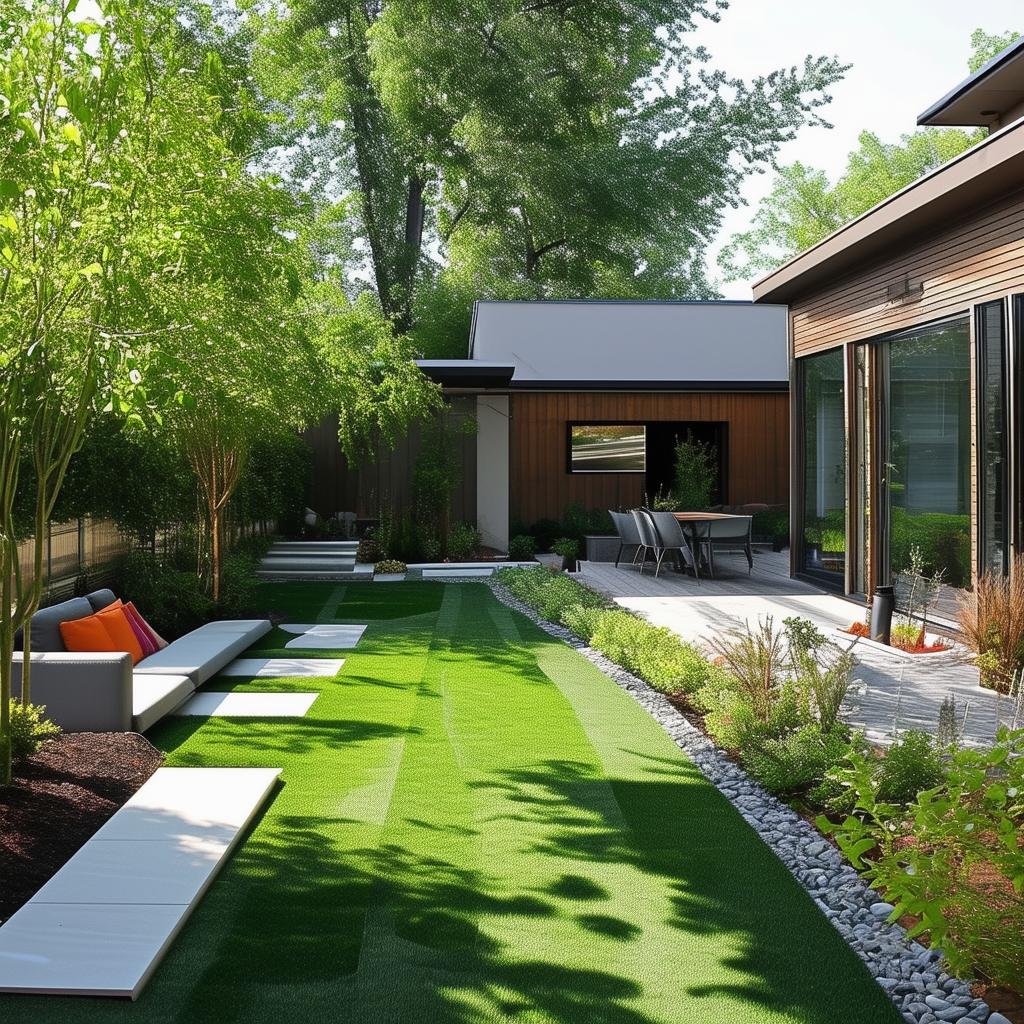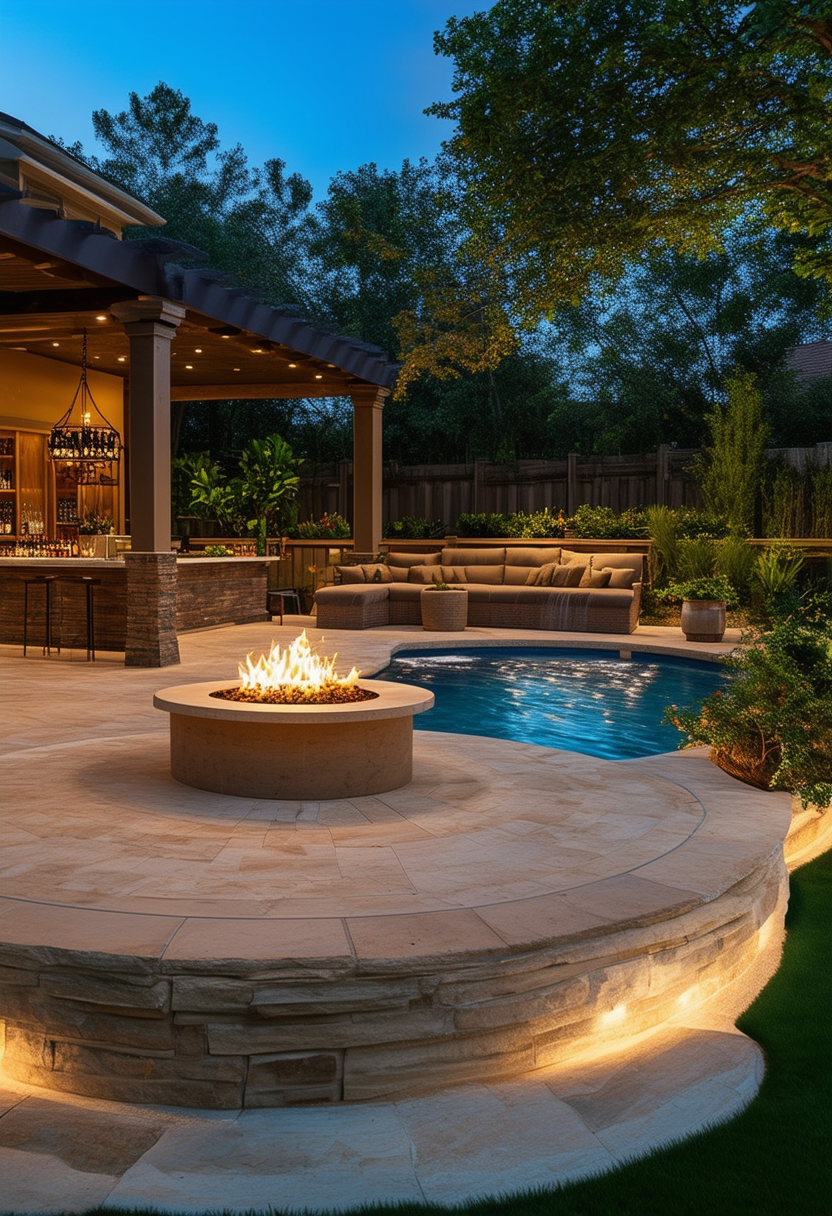Small backyard landscaping has evolved leaps and bounds in recent years, bringing forth a revolution in outdoor design that challenges conventional notions of what can be achieved with limited space. From innovative layouts and space-saving techniques to cutting-edge materials and minimalist aesthetics, contemporary small backyard landscaping is breaking new ground in creating stunning and functional outdoor spaces. Whether you’re looking to transform your backyard into a cozy retreat, a vibrant gathering spot, or a serene oasis, the possibilities are endless with the latest trends and techniques in modern outdoor design.
Embracing the philosophy that less is more, today’s small backyard landscaping is all about maximizing space efficiency while maintaining a sense of style and sophistication. With creative solutions such as vertical gardens, multi-functional furniture, and clever use of color and texture, even the tiniest of outdoor areas can be transformed into a true gem. Join us as we explore the exciting world of contemporary small backyard landscaping, where creativity and practicality come together to revolutionize the way we think about and enjoy our outdoor spaces.
Innovative Design Techniques for Small Backyard Landscaping
One of the most exciting trends in outdoor design today is the use of innovative techniques to transform small backyard spaces into stunning landscapes. By utilizing creative ideas and cutting-edge design concepts, homeowners can revolutionize their outdoor areas and create a beautiful oasis right in their own backyard.
When it comes to small backyard landscaping, thinking outside the box is key. Incorporating unique features such as vertical gardens, modular furniture, and creative lighting solutions can help maximize space and create a visually dynamic outdoor environment. By combining different elements like textures, colors, and materials, homeowners can create a one-of-a-kind backyard that is both functional and aesthetically pleasing.
| Vertical Gardens | Maximize space and add greenery |
| Modular Furniture | Create versatile seating options |
| Creative Lighting | Enhance ambiance and showcase key features |
Another key aspect of innovative small backyard landscaping is the use of multi-functional design elements. By incorporating features that serve multiple purposes, such as a fire pit that also functions as a table, homeowners can make the most of their limited outdoor space. This allows for seamless transitions between different areas of the backyard and creates a cohesive and integrated outdoor living experience.
Utilizing Vertical Space for Maximum Impact
When it comes to maximizing the potential of a small backyard, thinking vertically can be a game-changer. By utilizing the vertical space effectively, you can create a stunning outdoor oasis that feels expansive and functional. One way to achieve this is by incorporating tall planters and hanging baskets to add greenery and color without taking up precious ground space.
Another strategy for making the most of vertical space is to install a trellis or vertical garden. This allows you to grow vegetables, herbs, or flowers in a compact and visually appealing way. Climbing plants like ivy or jasmine can also be trained to grow vertically, adding a touch of natural beauty to your outdoor setting.
Consider adding a pergola or arbor to create a focal point in your backyard while also providing shade and privacy. These structures not only add visual interest but also offer a vertical element that can be utilized for hanging lights, lanterns, or decorative accents. By incorporating these design elements, you can transform your small backyard into a stylish and functional outdoor retreat.
Creating Multi-Functional Outdoor Living Areas
When it comes to designing outdoor living areas, the possibilities are endless. With a little creativity and innovation, you can transform a small backyard into a multi-functional space that meets all your needs. From cozy seating areas to vibrant garden spaces, there are plenty of ways to make the most of your outdoor space.
One key element in creating a versatile outdoor living area is to incorporate different zones within the space. By dividing the area into distinct sections, you can create designated areas for dining, entertaining, gardening, and relaxation. This not only maximizes the functionality of the space but also adds visual interest and depth to the design.
| Comfortable seating area | Shaded dining space |
| Lush greenery and potted plants | Outdoor kitchen or grill station |
Another important aspect of contemporary small backyard landscaping is to choose furniture and fixtures that are both stylish and functional. Opt for weather-resistant materials and versatile pieces that can easily be rearranged to suit different activities. Adding elements such as outdoor lighting, a fire pit, or a water feature can also enhance the ambiance of the space and make it more inviting for guests.
Incorporating Sustainable Practices for Eco-Friendly Landscaping
When it comes to transforming outdoor spaces, is key. By embracing environmentally-conscious methods, you can revolutionize your small backyard into a contemporary oasis that not only looks beautiful but also helps to protect our planet.
One way to achieve eco-friendly landscaping is by selecting native plants that are well-suited to your region’s climate and soil conditions. These plants require less water and maintenance, reducing the need for harmful pesticides and fertilizers. Additionally, incorporating a diverse range of native plants can attract beneficial pollinators such as bees and butterflies, further enhancing the biodiversity of your outdoor space.
Another sustainable practice to consider is utilizing permeable hardscaping materials, such as gravel or permeable pavers, to allow rainwater to infiltrate the soil rather than run off into storm drains. This helps to prevent water pollution and erosion, while also recharging groundwater levels. In addition, installing a rain barrel or a greywater system can capture rainwater from your roof or recycle household water for irrigation purposes, further reducing your reliance on municipal water sources.


